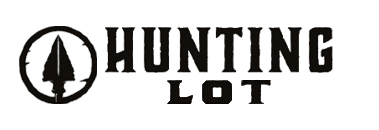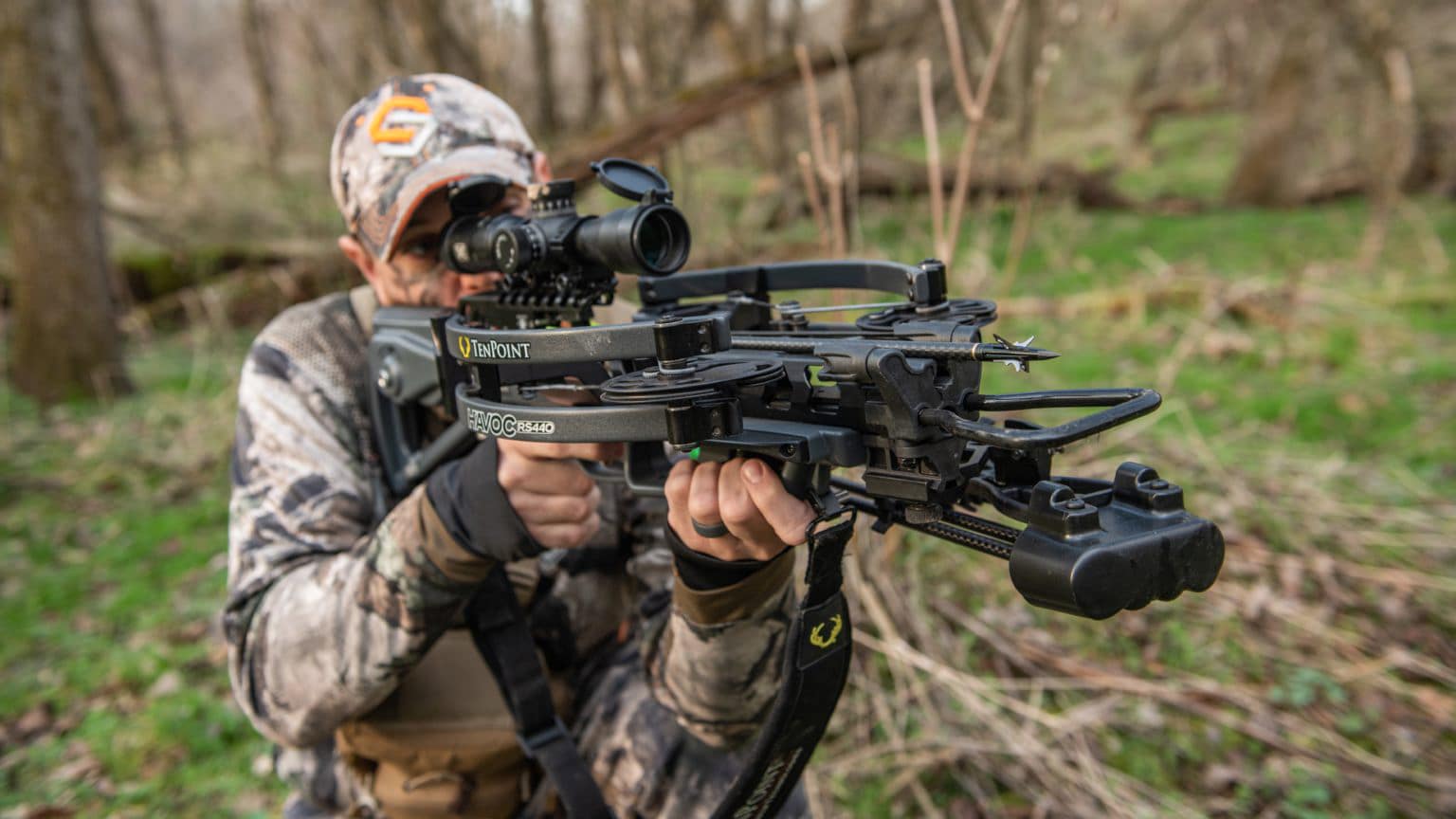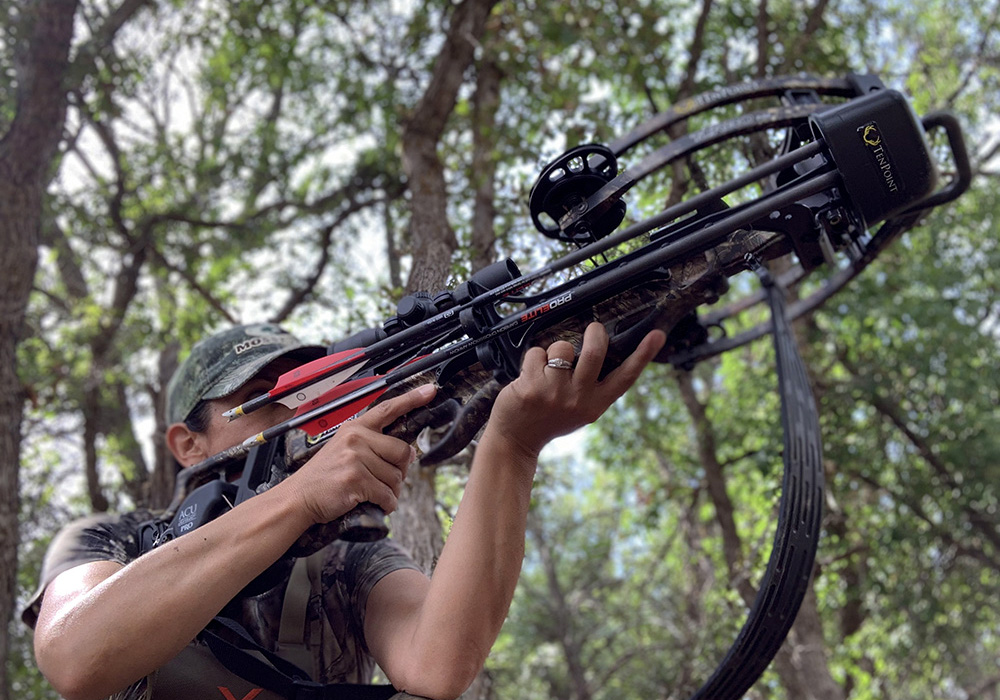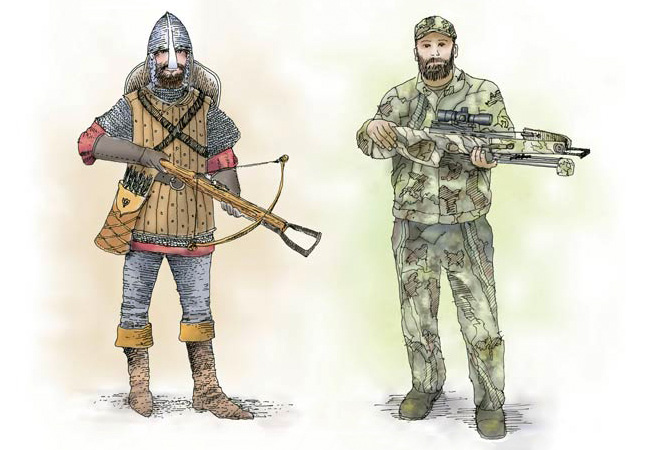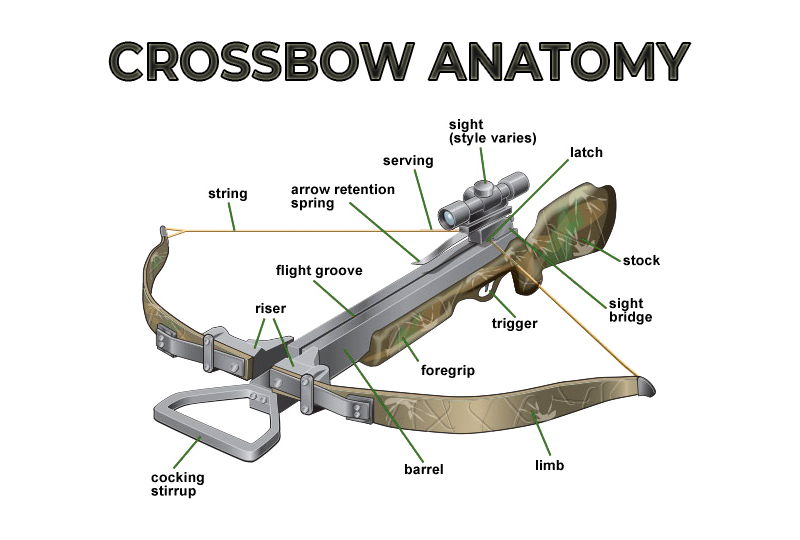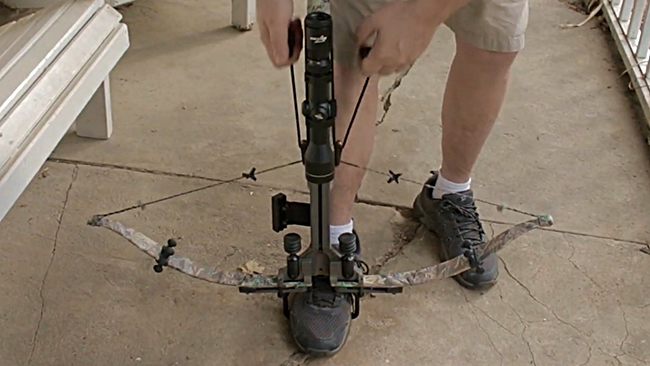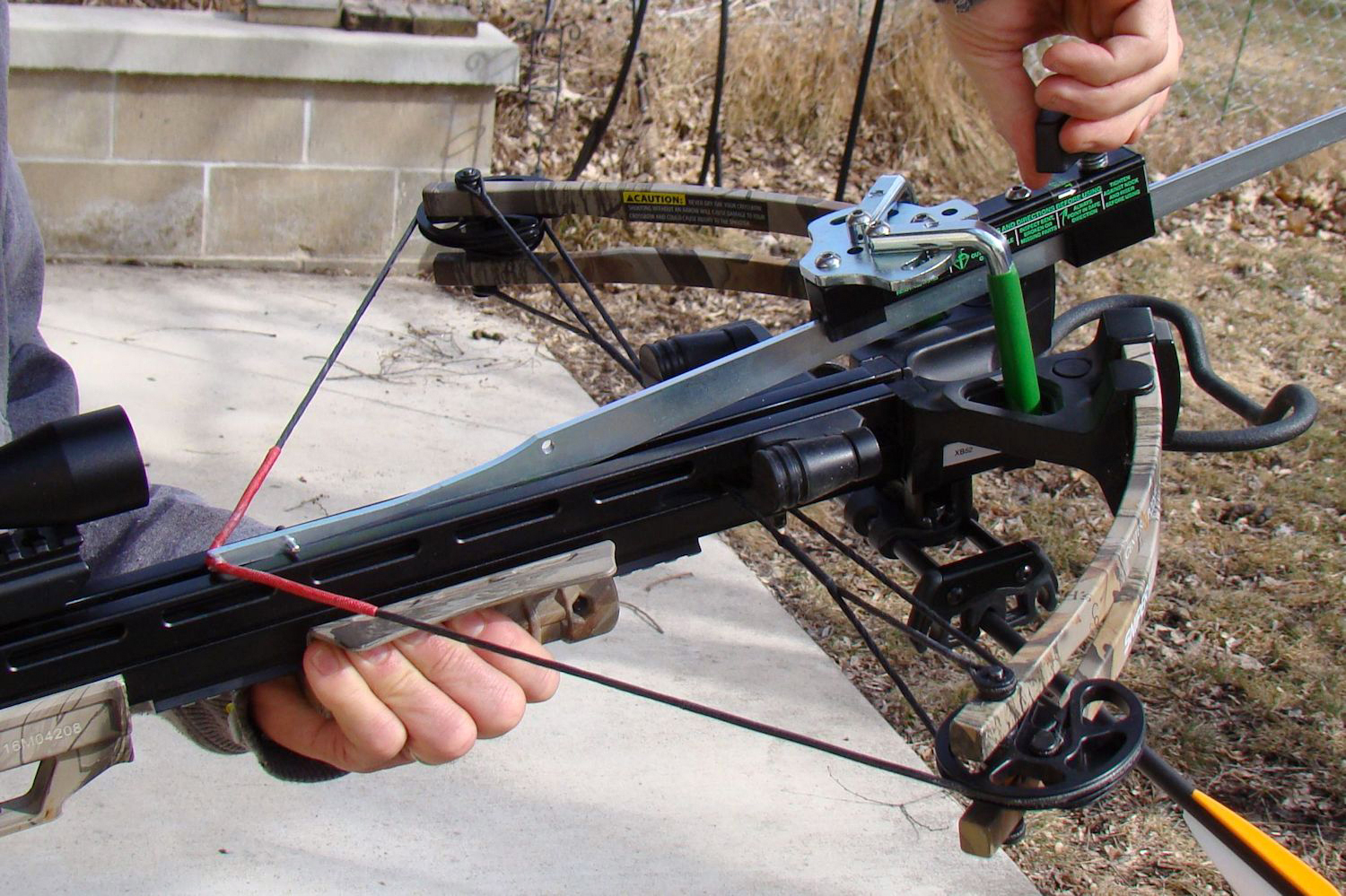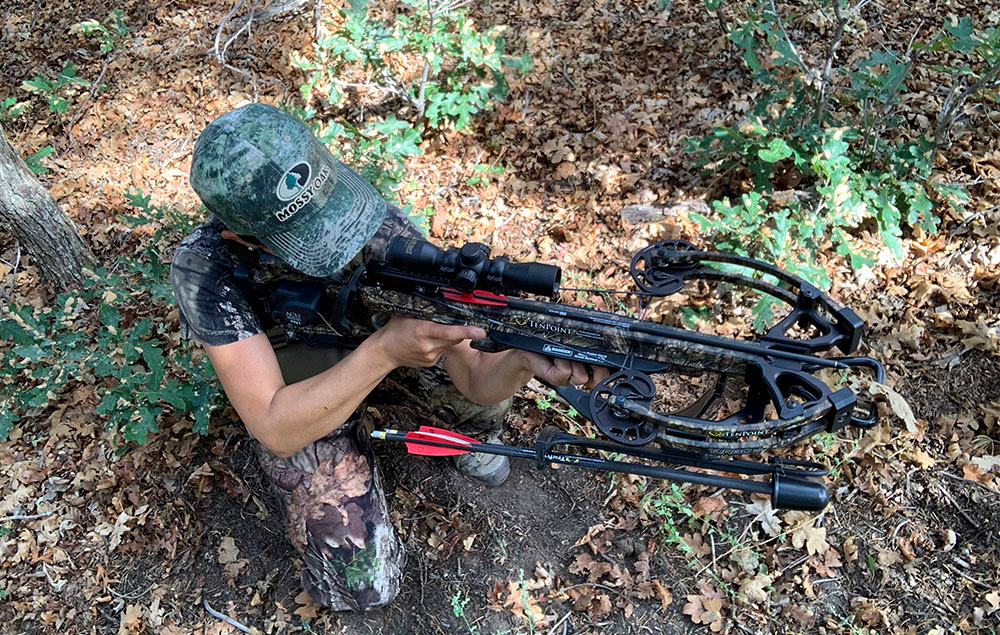Are you a beginner looking to learn how to use a crossbow? Well, worry not! While operating a crossbow requires technique and patience, it is no rocket science.
If you are willing to learn and put in the effort, nobody can stop you from becoming a professional crossbow hunter. To help you learn, I have detailed everything about crossbows and their operation below.
Contents
Why Use a Crossbow for Hunting?
Crossbows are most commonly used during the bow and muzzleloader seasons.
Traditionally hunters used muzzle loading guns during the muzzleloader season. However, these are pretty slow, making crossbows a far better alternative.
Similar is the case for bows which are slow and inefficient as compared to the modern hunting crossbows.
More importantly, it is pretty early in the season when the deers are living in their natural patterns. The gun season has not started, and the deers are not on caution for hunters.
As a result, it becomes easier for crossbow hunters to come in and make a mark. Moreover, bow season is also warmer and more comfortable for the hunter generally.
The best benefit is that the best modern crossbows are based on mechanisms that make them easier to use, more convenient, and more comfortable than traditional bows.
Cocking devices and drawing mechanisms do not put a heavy strain on the body. They are quite easy and user-friendly, even for weak, wounded, and disabled people.
Everyone can have a good time on the hunting field without the wear and tear one experiences from bowhunting.
Hunting Crossbows Anatomy
If you plan on hunting with a crossbow, it is vital to get familiar with its anatomy.
A crossbow consists of several critical components, and all play a collective role in making hunting a pleasant experience. These include:
- Stirrup – situated at the crossbow’s front and helps in the cocking procedure. It has space for you to place a foot inside so that the crossbow stays stable during cocking.
- Stock – it is the main body of the crossbow. If all other components were to be removed, only the stock would be left. The stock has the front grip, the foregrip, and the shoulder resting part, the buttstock. The foregrip goes in your hand and the buttstock on your shoulder.
- Limbs – they are the powerhouse of a crossbow. Each crossbow has two limbs that flex and store energy every time you cock it. It is this energy that gives the arrow or bolts the speed and power to hit the target. Different types of crossbows have variously designed limbs; however, all serve the same purpose.
- Bowstring – this component is connected to the limbs. It is responsible for transferring the energy stored in the limbs to the bolt or arrow.
- Scope – it’s an additional accessory but a vital component for any crossbow. It helps to align the target by magnification. You can choose from a wide variety of scopes with different ranges.
- Cables – found on the stock of the crossbow. They require occasional maintenance to stay in good condition.
- Rail – the rail is located at the top of the foregrip. The bowstring slides across the rail to accelerate the arrow sitting on it.
- Trigger – like the trigger you find in a gun, crossbows also work on a trigger mechanism. The trigger lets loose the bowstring latch when pulled. Most crossbows come with a safety switch for the trigger to prevent misfires.
- Crossbow Quiver – stores the extra arrows and bolts since crossbows can only hold one bolt at a time. The remaining goes into the quiver.
How to Load a Crossbow
Using a crossbow is not only more efficient but also quite exciting. So whether you are using one for target practice or hunting, I have compiled instructions to show you how to load and shoot a crossbow.
It is highly recommended that you go through all the warnings and instructions set by the manufacturer first for maximum safety.
Taking the Stance
The initial vital step to use a crossbow is to load it.
First, you have to take the proper stance by placing your foot in the stirrup. This allows you to plant the crossbow in the ground. Consequently, it becomes easier to pull back the cocking ropes.
You can also use modern cocking devices, which make the process a lot easier. However, the most common medium to load a crossbow is cocking ropes.
Once you have taken the correct stance, the next step is to put the cocking rope in the groove at its middle. Again, perfect orientation is necessary in order to make the pullback easier.
Cocking the Crossbow: Step-by-Step
- For the next step, you will find a groove on top of the crossbow near the stock. This is a vital step as it aids in pulling the bowstring back. Any crossbow that supports cocking ropes loading mechanism will have a groove at the top.
- Next, you must put the cocking hooks on the string on both sides of the barrel. The hooks must be facing outwards and away from you.
- If you want to be accurate every time, I recommend that you use a marker to mark the location of the cocking hooks on the bowstring. This way, you will be able to place the hooks in a proper place every time.
- Even out the handles by pulling the ropes a little bit. It is vital that you pull both ropes simultaneously.
- Once everything is in perfect order, you have to pull back in one go with force and a fluid motion. You will hear two to three clicks from the crossbow, ensuring that it has been cocked. Once done, make sure your trigger is on safety to avoid any accidental shots.
How to Shoot a Crossbow
There is a proper procedure to shoot a hunting crossbow. Many hunters do target practice where they polish their crossbow shooting skills.
It is necessary for your own safety and others around you to know the steps and precautions for shooting a crossbow. Here are three simple things to keep in mind when shooting a crossbow:
Load the Crossbow with a Bolt
Once the crossbow has been cocked, the next thing is to load it with a bolt or an arrow. Before doing so, make sure that the safety switch is on to avoid any accidental fires.
The arrow must be placed in the crossbow barrel with the arrow cock vane aligned in the barrel channel. Securely nock the bolt or arrow in its place to avoid any accidents or damage to the bowstrings.
Never Point the Crossbow Towards People
While you are operating the crossbow, keep in mind not to point it towards anyone. This is important for all times, even when you are in the process of cocking it.
The first important step to operating any crossbow is to put on the safety switch for the trigger. This helps avoid any accidental fires.
However, once the crossbow has been cocked and loaded with a bolt or arrow, you must not point it towards any person as an added precaution.
While crossbows are solid and reliable products, one must always take extra precautions with lethal weapons. A crossbow shot can be fatal and must not be taken lightly. Therefore, take as many preventive measures as you can.
Shooting the Crossbow
Once you have a fully cocked and properly loaded crossbow, it is time for shooting.
Before shooting a crossbow, you need to have the right aim. Most hunting crossbows come with scopes or sigh in arrangments.
You need to aim at your target, whether it is a practice target or an actual deer. Once the aim is in place, there are other considerations to take.
First, make sure that no obstructions lie between the crossbow and the target. More importantly, no obstructions should lie in the way of the crossbow limbs.
In case of obstructions, the limbs could malfunction and potentially injure you. Therefore, it is also advisable not to wrap your thumb around the forearm of the crossbow.
When you are in a perfect position with the ideal aim, it is time to pull the trigger.
It works in the same way as it does operate a rifle. When you get the target in sight and pull the trigger, it is vital to keep the aim aligned.
As you pull the trigger, it will make a pop sound as the crossbow fires the arrow/bolt towards the target.
It is important to note that adjusting your scope will take some time. The more you practice, the more precise your aim will be.
It will become easier to aim, sight, and fire at your desired target as you get used to the crossbow.
Effective Range to Use a Crossbow
The simple answer is that there is no set standard for an effective range to use a crossbow. However, the usual consensus is that 50 yards are optimal.
However, the effective range depends more on the hunter than the crossbow.
Most people wrongly believe that crossbows can fire as far as rifles. This is untrue as a shot from a rifle is effective even 200 yards away.
While the mechanisms for a crossbow and a rifle are quite similar, the range varies widely.
A crossbow shot is effective to a minimum distance like other archery equipment. However, most hunters can fire a shot as far as 40-50 yards, which is close enough to be lethal.
Beyond this, factors such as the speed of the arrow and the weight matter. As a result, the shot can go further than 50 yards. However, it becomes less lethal beyond this range.
Safety Tips You Should Follow
Here are some safety tips for operating a crossbow:
- The most important of all is to never fire a crossbow without nocking a bolt in the bowstring latch. Crossbow string has a lot of energy stored in it when cocked. Suppose you fire it without a bolt; all the energy transfers to the crossbow’s body. This has the potential to damage the crossbow significantly and can even cause severe and fatal injuries. Many crossbows come with safety features that block fires if a bolt is not properly sitting in its place.
- Be very cautious during target practice. Look around and ensure no live human or animal is in the way or around you. More importantly, ensure that your target has the thickness and strength to take in the energy and speed of the shot fired at it.
- While keeping the safety switch on for the trigger is recommended, you must also avoid keeping your finger on the trigger unless it’s time to fire. It will further help to prevent accidental shots.
- Make sure there are no obstructions between you and the intended target. The path should be clear and safe for you and others, including animals, humans, or any valuable thing.
- It is also recommended for safety purposes to use only semi-dull tips specifically for practice on the bolts. Using sharp broadheads is not viable and can be dangerous during practice sessions. You should use sharp broadheads only when you have practiced enough and are ready for the field.
Crossbow Maintenance and Storage
The last and one of the most critical parts of using a crossbow is its maintenance and storage. Once you have purchased a crossbow, it is your responsibility.
Whether you want to keep it long-term or let it go through hard wear and tear with minimal maintenance, it is up to you.
The ideal way to maintain a crossbow is to clean it right after using it at the target range.
First, remove all the dust and clutter all over it. Then, to keep the strings in perfect condition, make sure to wax them from time to time.
Also, don’t forget to clean the arrows and other accessories that you might have, including scopes and bolts. All this cleaning is essential to ensure you have a ready-to-use hunting crossbow at your disposal.
Once you have cleaned all the components, it is time for storage at the end of the season. The best place to store it is in a cool and dry place away from the heat.
Excessive heat over a long period and damage the cables and strings and alter its tuning.
It is also recommended to unstring the crossbow if you are not going to use it for a long time. This helps the limbs to rest a little while you relax as well.

Hi, my name is Michael Goodman. As a skilled hunter and a man of the field, I will show you some sophisticated, intelligent, and useful hunting methods and techniques.
